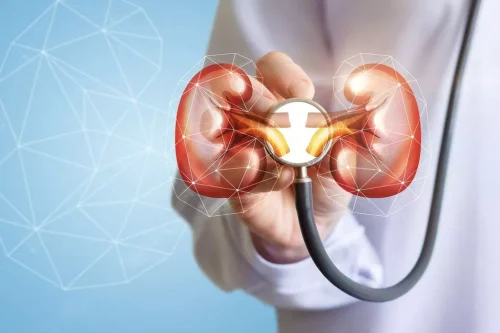
The production of these neurotransmitters is affected when a person stops or significantly reduces alcohol intake. If you drink alcohol heavily for weeks, months, or years, you may have both mental and physical problems when you stop or seriously cut back on how much you drink. As the parenteral form of clomethiazole is no longer available, its application is dependent on sufficient alertness and cooperation to enable peroral treatment. For adequate alleviation of delirious symptoms, 200 mg capsules are administered (maximum 24 capsules per day) and doses are repeated every 2–3 h until sufficient calming. As with BZDs, CNS respiratory center depression may emerge, especially in combination with BZDs, whose daily doses should be reduced to 15–20%. Accordingly, the combinatory intake of clomethiazole and ethanol should be avoided due to its possible life‐threatening effects.
- The effects of high-quality sleep will continue to build each day.
- Although you might be tempted to tough out withdrawal symptoms by yourself, it’s not worth the risk.
- Over the years, he has served as a department chair, adjunct professor, assistant professor, speaker and trainer.
- Alcohol has what doctors call a depressive effect on your system.
Questions to ask your doctor
The first symptoms—and maybe the only symptoms—you experience may resemble a bad hangover. She adds that withdrawal can also occur after a significant reduction in alcohol consumption. In short, alcohol withdrawal syndrome is caused by excessive drinking over time. Heavy alcohol consumption negatively affects the nervous system, which controls everything from movement and digestion to breathing and cognitive function. When a person stops drinking suddenly, their body experiences a degree of shock as the nervous system struggles to adapt to the lack of alcohol, which can lead to alcohol withdrawal syndrome. These symptoms may start a few hours or a few days after your last drink of alcohol.

Clinical management of the alcohol withdrawal syndrome
- Risk factors for alcohol use disorder include a family history of problems with alcohol, depression and other mental health conditions, and genetic factors.
- You might also take anti-seizure meds and antipsychotics, along with other drugs.
- But severe or complicated alcohol withdrawal can result in lengthy hospital stays and even time in the intensive care unit (ICU).
- The effects of alcohol can even make you abusive or cause you to harm others emotionally.
In some situations, a doctor or psychiatrist might prescribe medication to help with PAWS symptoms. Your medication options depend on the substance you used, your symptoms, and your medical history. Taking care of your basic needs is a good way to avoid worsening your mental and physical symptoms. Some sources report that PAWS symptoms for morphine users usually start between 6 to 9 weeks after the acute withdrawal phase and persist until 26 to 30 weeks. Whether used for medical or recreational reasons, stopping cannabis use might induce withdrawal symptoms, especially if you use it regularly and in high doses.
Lifestyle Quizzes

Post-acute withdrawal symptom (PAWS) is a condition where you experience withdrawal symptoms for an extended period of time — in other words, long after the typical acute stage is over. Treatment options vary from state to state, says Farrell, but generally, people have the option to engage https://ecosoberhouse.com/ in an outpatient program where they can begin identifying how their addictive behavior began in the first place. In that setting, the affected person engages in groups daily with others who are also seeking treatment for addiction, explains Farrell. Groups are led by both a licensed therapist and qualified peer support specialist. They can also receive medication management services and individualized therapy.
- Official Alcohol Withdrawal Management Guideline quick-reference tools provide healthcare providers with instant access to current guidelines in a clear concise format.
- You may also experience periods of dry heaving without vomiting.
- If alcohol is interfering with your health or your personal, financial, or professional life, consider quitting.
- If you decide to get treatment, your doctor can recommend the type of care that you need.
- Sometimes, symptoms may be severe enough to require medical treatment at a hospital or rehabilitation facility.
A relative or friend must stay with you to monitor your condition. Their job is to make sure that if you develop any worsening of symptoms, they get you to a hospital or call 911 immediately. People who have an addiction to alcohol or who drink heavily on a regular basis and are not able to gradually cut down are at high risk of AWS. It’s important to be honest about your alcohol use — and any other substance use — so your provider can give you the best care. Alcohol (ethanol) depresses (slows down) your central nervous system (CNS).
As early as one week after stopping alcohol, you will likely begin to see benefits. The physical symptoms of withdrawal will be past their worst for most people, and the benefits of quitting alcohol will start to be noticeable. Explore other courses and resources for healthcare providers treating patients with alcohol use disorder. Intended to aid clinicians in their clinical decision making and management of patients experiencing alcohol withdrawal syndrome.
Medication for Alcohol Withdrawal
The three-question Alcohol Use Disorders Identification Test–Consumption and the Single Alcohol Screening Question instrument have the best accuracy for assessing unhealthy alcohol use in adults 18 years and older. Two commonly used tools to assess withdrawal symptoms are the Clinical Institute Withdrawal Assessment for Alcohol Scale, Revised, and the Short Alcohol Withdrawal Scale. Patients with mild to moderate withdrawal symptoms without additional risk factors for developing severe or complicated withdrawal should be treated as outpatients when possible. Ambulatory withdrawal treatment should include supportive care and pharmacotherapy as appropriate.

By the end of your first alcohol withdrawal syndrome symptoms month of sobriety, the benefits of better sleep, improved hydration, spending less and decreased calorie intake will be growing. You will likely have saved over $800 and avoided about 12,000 calories or more, allowing you to lose at least four pounds. By the end of this first month, your recovery will be well underway, and your struggle with alcohol will begin to become more of a distant memory than a recent struggle. There are also medicines your doctor may prescribe to help with maintaining your sobriety. If a loved one is experiencing PAWS, you can show support by reminding them that you’re there for them and encouraging them to reach out to you for help.
Comentários